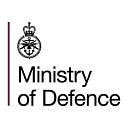Inside the Red Zone: A Royal Navy medic tackling coronavirus
Hon. Midshipman Christopher Storer is a Royal Navy medical bursar studying medicine at Brighton & Sussex Medical School. Since teaching stopped due to lockdown, he has been working as a Healthcare Assistant (HCA) in A&E in the Royal Sussex County Hospital. Read his story
I’d just completed my second year presentation in March, when we received the email telling us that the COVID-19 outbreak had been declared a pandemic, and that teaching was suspended immediately. I’d already been working at the Royal Sussex County Hospital for almost a year at that point and so as lockdown was announced I was able to immediately book in to work the next day.
Within a week, we’d started to be fit-tested for our personal protective equipment (PPE). It was a surreal experience; they place a large hood over your head and start to fill it with a bitter-tasting gas. The masks contained a filter, so if they were fitted correctly you couldn’t taste the test solution. It seemed like a bizarre game at the time, but in reality it was making sure that we’d be protected while being able to talk and move around when working with patients.
In A&E, like the rest of the hospital, the facilities had been split into “red” and “green” zones — with red being the areas where Covid-positive patients were receiving treatment, and the green zones being protected areas which would be kept Covid-free.
By the end of March, the effects of lockdown had made the hospital significantly quieter. There was a constant sense that a tidal wave could hit at any moment. Nothing was left to chance, and staff were taking full advantage of the initial quiet to prepare. Extra training was provided to refresh skills, and within a couple of weeks I was able to work in the patient ambulatory triage, assisting the nurses by putting cannulas in, taking bloods and other tasks. It was a high-pressure, fast-moving environment but I felt incredibly well supported by the emergency department staff.
In April, with a good amount of experience working at the front of A&E, I began working in the red zone. Areas were set up to put on the full PPE: a surgical gown, the tight-fitting masks, a visor and scrub caps. I remember feeling anxious the night before my first red zone shift– the name conjures up images of red lights and closed off wards, looking like something on a submarine from an old war movie. But the reality was nothing of the sort. While access in and out was highly restricted to prevent the spread of the virus, it was a normal hospital environment.
Once in the full PPE, you could not leave freely from the red zones, but care was taken to make sure you could rest and take on regular water. This was especially important when wearing all those layers as the temperature began to soar in May. Working in the confined environment really brings you together, and we bonded quickly as a team over a 12-hour shift.
The downside of wearing so much protective clothing was that, while it was a barrier to disease, it also created a barrier between us and the patient. The visors and masks can be an intimidating sight and it was hard to convey emotion and communicate with most of your face covered up.
However, the emergency department staff were quick to adapt to this challenge. One person had the idea to create new passes with a photo of ourselves on that we could wear over the top of our PPE. The aim was to make it less intimidating for the patients. They could see that behind the mask, we’re just ordinary people too. The full impact became apparent when caring for an elderly lady who was deaf. Having something to point to and say “hi, this is me” made things much more human. We could start to build a rapport, which in turn helped to calm her.
It was hard work, but there were so many morale-boosting moments working on the emergency department team. The local community really come together to support the NHS. We’d receive donated scrubs and knitted ear protectors to help with the sore marks you get from wearing the surgical masks daily. At the Easter weekend, we received over 200 donated Easter eggs. It seems like such a small thing, but to the staff working there it means so much.
Looking back, I feel incredibly privileged to have worked as part of the A&E nursing team providing frontline care to patients. I’m glad to have been able to play a small part in helping during the COVID-19 outbreak.
